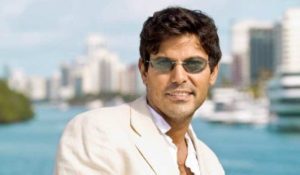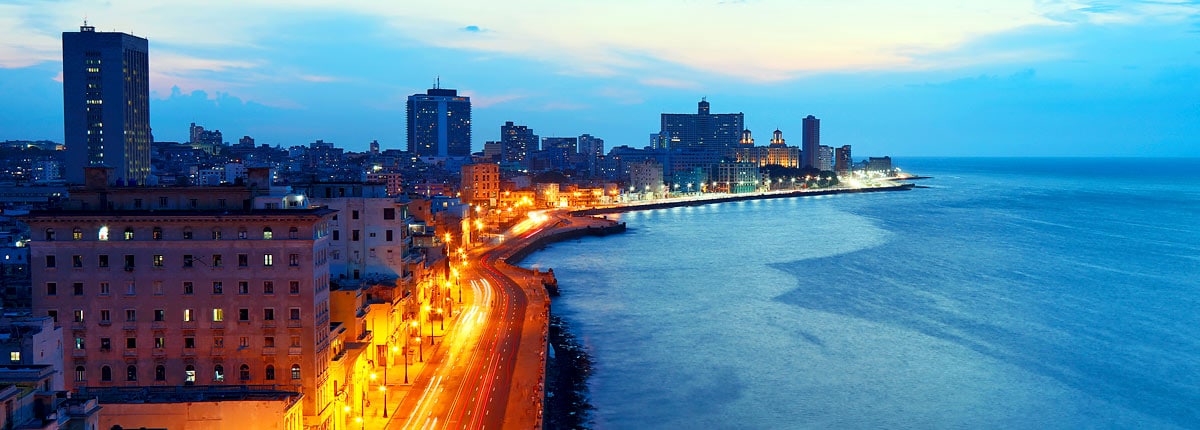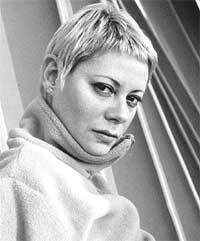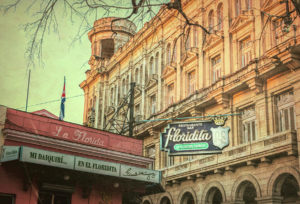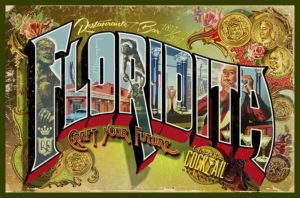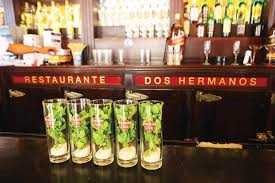 FRANCISCO GATTORNO, ACTOR DE TELEVISIÓN, TEATRO Y CINE. Videos
FRANCISCO GATTORNO, ACTOR DE TELEVISIÓN, TEATRO Y CINE. Videos
Francisco Alejandro Gattorno Sánchez nació el 12 de octubre de 1964 en Santa Clara, Cuba, más conocido en el mundo del espectáculo, como Francisco Gattorno, es un actor cubano-mexicano.
Creció en Santa Clara, hijo de padre canario y madre cuyos abuelos descendían de la población colonial francesa de Saint Domingue. Se interesó en actuar y dirigir de joven. De niño, Gattorno se volvió muy aficionado a las costumbres cubanas, como la música y los deportes cubanos. Fue actuando y dirigiendo, sin embargo, lo que más ocupó sus intereses. Por eso, Gattorno estudió actuación, tanto en Cuba como en México. Obtuvo la ciudadanía mexicana a principios de la década de 2000.
Su espléndida y larga trayectoria artística arranca en 1984, con su participación en la película ‘Una novia para David’, producida y rodada en Cuba. Antes había dedicado su tiempo al estudio y obtenido su licenciatura en Artes escénicas, Historia del Arte y un postgrado en actuación. Su vida actoral continuó ligada al cine.
El Verano de la Señora Forbes dio a Gattorno su primera exposición en México y también se vio en los Países Bajos. En 1989 jugó un pequeño papel en Papeles Secundarios (“Roles secundarios”) de 1989.
En 1994 fue un año importante para Gattorno: se mudó a México, participando en la conocida película Fresa y Chocolate (“Fresa y Chocolate”), una película sobre un homosexual que se enamora de un hombre comunista. Gattorno jugó con Miguel en ‘Fresa y Chocolate’. Habiéndose establecido en México, Gattorno debutó en las telenovelas de Televisa en 1995, actuando como Josè Maria en La Dueña. En La Dueña, Gattorno actuó junto a conocidos actores mexicanos como Angélica Rivera, Salvador Sánchez y Eduardo Santamarina, entre otros.
A la telenovela ‘Tu y Yo’ le siguió ‘Cañaveral de Pasiones’, donde Gattorno actuó junto a su compañero cubano César Évora y otros conocidos actores mexicanos, como Angélica Aragón y otros. Cañaveral de Pasiones fue un importante escalón en la carrera de Gattorno; Después de que terminó esta telenovela, muchos medios de comunicación comenzaron a hablar sobre su relación con Klitbo, con quien no tuvo hijos.
En 1998, Gattorno participó en una película de acción, ‘Engaño Mortal’. También actuó como Álvaro San Román en una telenovela llamada Preciosa. Gattorno y Èvora actuaron juntos una vez más en los Laberintos de Pasion de 1999. Laberintos de Pasión fue otro gran éxito de Televisa, para entonces, Gattorno se había convertido en un símbolo sexual entre las mujeres en México y América Latina, y entre las mujeres hispanas en los Estados Unidos. También participó ese año en ‘Entre la Tarde y la Noche’.
La fama de Gattorno siguió creciendo y, en 2000, hizo su debut en Hollywood, como Jorge Camacho en la película de bajo presupuesto Before Night Falls. Gattorno luego viajó a Colombia en 2001, para interpretar a Andrés Bustamante en Amantes del Desierto. Poco después, conoció a Belmaris González Suazo, una bailarina de ballet cubana que se convertiría en la segunda esposa de Gattorno. La pareja comparte dos hijas, Isabella y Carolina Alicia.
Gattorno continuó su trabajo de 2001 con ‘El Noveno Mandamiento’. Durante 2002, Gattorno participó en una telenovela que estaba dirigida a adolescentes y que se convirtió en un gran éxito: junto a Daniela Luján, Belinda Peregrin, Laura Flores y el ex Menudo Johnny Lozada, entre otros, Gattorno actuó en Cómplices al Rescate, una historia romántica sobre Jóvenes tratando de reparar algunas relaciones rotas.
En septiembre de 2004 comenzó una relación con el Teatro de Repertorio Español de Nueva York, donde debutó como Lector (Juan Julián) en el estreno mundial en español del Premio Pulitzer Drama Ana en el trópico del dramaturgo cubano Nilo Cruz. La obra obtuvo el reconocimiento de la crítica y se convirtió en parte del repertorio de obras teatrales del teatro. Ha estado jugando desde entonces. Gattorno también interpretó a Miguel en la popular comedia titulada Las quiero a las dos de Ricardo Talesnik y también fue sacerdote en Escrito y Sellado del dramaturgo venezolano Isaac Chocrón. Todas estas obras han sido dirigidas por el Director Artístico y Cofundador de Repertorio Español, René Buch, también cubano.
Gattorno interpretó a Roberto en la película La Migra de 2005, que se tituló Asesinato en la frontera para audiencias de habla inglesa. En 2006, Gattorno protagonizó la nueva versión de Telemundo de Julio Jiménez, La Viuda de Blanco, donde interpretó el papel de Sebastián Blanco y compartió créditos con la actriz mexicana Itatí Cantoral. También protagonizó la película panameña Chance, que ganó un premio internacional en La Habana, en 2010. También regresó en 2009 a las telenovelas mexicanas con su aparición junto a Sabine Moussier en la telenovela de Televisa, Mi Pecado. Jugó a Rodolfo Huerta, padre de Julián Eugenio Siller y Josué (Diego Amozurrutia), esposo de Justina y él interpreta a un maestro. En 2009, interpretará a Violeta Isfel, su padre de Antonella, en Atrévete a soñar.
En 2012, regresó a la telenovela con sus amigos Altair Jarabo y Sabine Moussier, junto con su compañero actor y amigo cubano César Évora en 1996. En la nueva versión de ‘Abismo de pasion’ se basa en el remake de Cañaveral de Pasiones. Jugó que Braulio es un jefe de Gabino y Lucio de Arango Pepper Processing Company (La Anita / Santa Maria), trabajador de los pimientos, es el padrastro de Vicente (Adriano Zendejas) y esposo de Antonia (Vanessa Arias). En 2012, se unió al elenco de la telenovela Amores verdaderos (telenovela), interpretando a Santino “Salsero” Roca, el principal antagonista / villano principal de la historia.
En 2013, se unió al elenco de la telenovela ‘Lo Que La Vida Me Robó’ interpretando a Sandro Navarez, el villano secundario.
Es dueño de una propiedad en Coconut Grove, Miami, Florida.
Vida personal.
También conoció a su futura esposa, Cynthia Klitbo, en ese momento, una estrella en ciernes. Gattorno y Klithbo finalmente se divorciaron
Se caso con Belmaris González Suazo (2001 presente)
Niños, Isabella Gattorno González, Carolina Alicia Gattorno González.
Filmografia
Televisión
Últimas actuaciones.
2001-2002 Amantes del desierto Andrés Bustamante Protagonista
2002 Cómplices al rescate Alberto Del Río Protagonista adulto
2002-2003 Clase 406 Luis Felipe Villasana / Santiago Cadavid Aparición especial
2006 Tierra de Pasiones Pablo González Papel de Apoyo
2006 La viuda de Blanco Sebastián Blanco Protagonista
2009 Mi pecado Rodolfo Huerta Co-Protagonista
2012 Abismo de pasión Braulio Rol de apoyo
2012-2013 Amores verdaderos Santino Roca “Salsero” Antagonista
2014 Lo que la vida me robó Sandro Narváez Antagonista
2014-2015 Muchacha italiana viene a casarse Aníbal Valencia Principal Antagonista
2016 Mujeres de negro Lorenzo Rivera Apariencia Especial
2017 El Bienamado Jesús Tranquilino de la Asunción Cárdenas “Chuy Muertes” Papel de Apoyo
 FRANCISCO GATTORNO, TELEVISION, TEATRO AND FILMS ACTOR. Videos.
FRANCISCO GATTORNO, TELEVISION, TEATRO AND FILMS ACTOR. Videos.
Francisco Alejandro Gattorno Sánchez was born October 12, 1964, in Santa Clara, Cuba, better known in the show business world plainly as Francisco Gattorno, is a Cuban-Mexican actor.
He grew up in Santa Clara son of a Canarian father, and mother whose grandparents descended from the French colonial population of Saint Domingue. He became interested in acting and directing as a young man. As a child, Gattorno became very fond of Cuban customs, such as Cuban music and sports. It was acting and directing, however, that occupied his interests more. Because of that, Gattorno studied acting, both at home in Cuba and in Mexico. He earned Mexican citizenship during the early 2000s.
In 1985, 21-year-old Gattorno made his professional film debut, participating as Miguel in a Cuban production ‘Una Novia para David’ (“A Girlfriend for David”). Before this chance, he had played in amateur films as Tomas Piard’s Boceto where he made a brief full frontal nudity. Three years passed, before Gattorno got his next job in this media, in El Verano de la Señora Forbes (“The Summer of Miss Forbes”). El Verano de la Señora Forbes gave Gattorno his first exposition in Mexico and was also seen in the Netherlands. In 1989 he played a small role in 1989’s Papeles Secundarios (“Secondary Roles”).
In 1994 was a breakthrough year for Gattorno: he moved to Mexico, participating in the well-known film Fresa y Chocolate (“Strawberry and Chocolate”), a film about a homosexual who falls in love with a communist man. Gattorno played Miguel in ‘Fresa y Chocolate’. Having established himself in Mexico, Gattorno debuted on Televisa’s telenovelas in 1995, acting as Josè Maria in La Dueña. In La Dueña, Gattorno acted alongside well-known Mexican actors such as Angélica Rivera, Salvador Sánchez, and Eduardo Santamarina, among others.
La Telenovela ‘Tu y Yo’ was followed by ‘Cañaveral de Pasiones’, where Gattorno acted alongside fellow Cuban César Évora and other well-known Mexican actors, such as Angélica Aragón and others. Cañaveral de Pasiones was an important stepping stone in Gattorno’s career; after this soap opera was over, many media outlets began to talk about his relationship with Klitbo, with whom he did not have any children.
In 1998, Gattorno participated in an action film, ‘Engaño Mortal’. He also acted as Alvaro San Roman in a telenovela named Preciosa. Gattorno and Èvora acted together once again in 1999’s Laberintos de Pasion. Laberintos de Pasion was another major Televisa hit, by then, Gattorno had become a sex symbol among females in Mexico and Latin America, and among Hispanic females in the United States. He also participated that year in ‘Entre la Tarde y la Noche’.
Gattorno’s fame kept growing, and, in 2000, he made his Hollywood debut, as Jorge Camacho in the low-budget film Before Night Falls. Gattorno then traveled to Colombia in 2001, to play Andres Bustamante in Amantes del Desierto. Soon after, he met Belmaris González Suazo, a Cuban ballet dancer who would become Gattorno’s second wife. The couple share two daughters, Isabella, and Carolina Alicia.
Gattorno continued his 2001 work with ‘El Noveno mandamiento’. During 2002, Gattorno participated in a telenovela that was geared towards teenagers and which became a major hit: alongside Daniela Luján, Belinda Peregrin, Laura Flores, and former Menudo Johnny Lozada, among others, Gattorno acted in Cómplices al Rescate, a romantic story about youngsters trying to repair some broken relationships.
In September 2004 he began a relationship with the Spanish Repertory Theatre of New York debuting there as the Lector (Juan Julián) in the World Premiere in Spanish of Pulitzer Prize Winning Drama Ana en el trópico by Cuban playwright, Nilo Cruz. The play garnered critical acclaim and became part of the theater’s repertory of plays. It has been playing ever since. Gattorno also played Miguel in the popular comedy titled Las quiero a las dos by Ricardo Talesnik and also played a priest in Escrito y Sellado by Venezuelan playwright Isaac Chocrón. All of these plays have were directed by Repertorio Español’s Artistic Director and Co-Founder, René Buch, also Cuban.
Gattorno played Roberto in the 2005 movie La Migra, which was titled Murder on the Border to English speaking audiences. In 2006 Gattorno starred in the new Telemundo version of Julio Jimenez’s, La Viuda de Blanco where he played the role of Sebastian Blanco and shared credits with Mexican actress Itatí Cantoral. He also starred in the Panamanian film Chance which won an international award in Habana, in 2010. He also returned in 2009 to Mexican telenovelas with his appearance alongside Sabine Moussier in the Televisa telenovela Mi Pecado. He played Rodolfo Huerta, father of Julian Eugenio Siller and Josue (Diego Amozurrutia), husband of Justina and he plays a teacher. In 2009, he will play his Antonella’s father Violeta Isfel in Atrévete a soñar.
In 2012, he returned to the telenovela with his friends Altair Jarabo and Sabine Moussier, along with fellow Cuban actor and friend César Évora in 1996. In the new version of ‘Abismo de pasion’ is based on the remake of Cañaveral de Pasiones. He played Braulio is a Gabino and Lucio’s boss of Arango Pepper Processing Company (La Anita/Santa Maria)’s peppers worker, he is the stepfather of Vicente (Adriano Zendejas) and husband of Antonia (Vanessa Arias). In 2012, he joined the cast of the telenovela Amores verdaderos (telenovela), playing Santino “Salsero” Roca, the main antagonist / main villain of the story.
In 2013, he joined the cast of the telenovela ‘Lo Que La Vida Me Robó’ playing Sandro Navarez, the secondary villain.
He owns property in Coconut Grove, Miami, Florida.
Personal Life.
He also met his future wife, Cynthia Klitbo, at the time, a budding star herself. Gattorno and Klithbo eventually divorced
Spouse(s) Belmaris González Suazo (2001 present)
Children, Isabella Gattorno González, Carolina Alicia Gattorno González.
(READ FRANCISCO GATTORNO PERFORMANCES IN THE SPANISH SECTION)
Agencies/ Wikipedia/ Internet Photos/ YouTube/ Arnoldo Varona/ www.TheCubanHistory.com
THE CUBAN HISTORY, HOLLYWOOD.




